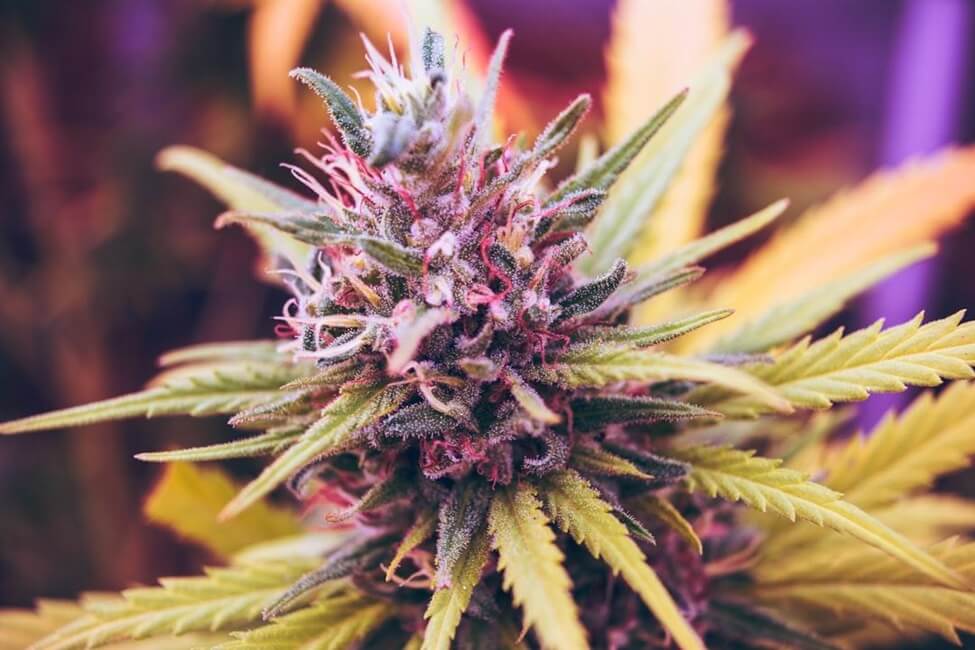Cannabis, more than just a plant, is a cultural phenomenon with layers of history, facts, and trivia that intrigue enthusiasts and the curious alike. While your local weed dispensary might offer you a piece of this green wonder, there’s a universe of cannabis facts that extends beyond the counter. From its multifaceted role in society to its surprising sustainability, understanding cannabis deeply enriches the conversation around it, debunking myths and shedding light on unexplored facets. This wave of enlightenment doesn’t just entertain; it informs and transforms perceptions in an age where knowledge is as potent as the plant itself.
Weed Dates Back Thousands of Years
Cannabis traces back to about 11,700 years ago, cannabis first appeared in Central Asia near the Altai Mountains. This region, pivotal in the plant’s history, saw cannabis used for its fibers in ropes and nets, as food, and for oil from its seeds. Intriguingly, our ancestors discovered its euphoriant properties upon heating, identifying the resin from distinctive female plants. This led to a shift from mere gathering to deliberate cultivation, selecting strains for either fibers or THC content. As nomadic peoples and trade routes expanded about 12,000 years ago, after the last glacial period, cannabis seeds traveled across continents, showcasing a symbiotic relationship between humans and the plant, aiding mutual propagation.
Cultural and Religious Roles
In the spiritual realm, cannabis held significant cultural and religious roles, particularly in India. Cannabis, particularly in the form of bhang, has been used in Hindu religious practices for thousands of years. Bhang is a preparation made from the leaves and flowers of the cannabis plant, mixed into drinks or sweets. It is traditionally consumed during festivals like Holi, the festival of colors, and Maha Shivaratri, the great night of Shiva.
According to mythology, Lord Shiva is often depicted with cannabis and is believed to have a special relationship with the plant. Legends suggest that Shiva discovered the transcendental properties of cannabis while wandering in the Himalayas and made it his favorite food. Devotees of Shiva consume bhang as a way to honor and connect with the deity, seeking his blessings for health, happiness, and spiritual insight.
Hemp Is Sustainable
Hemp stands out as a beacon of sustainability in the agricultural world, thanks to its minimal environmental footprint and multifunctional applications. Often celebrated for its rapid growth and low resource needs, hemp requires significantly less water compared to traditional crops like cotton. This attribute alone makes it a champion in sustainable farming, especially in regions prone to drought.
The versatility of hemp extends beyond just agricultural benefits. It plays a crucial role in the production of ‘hempcrete,’ a building material lauded for its carbon-negative properties. This means that hempcrete not only uses less carbon in its production but continues to absorb carbon dioxide throughout its lifecycle, making it a stellar example of a green building material.
Moreover, hemp’s ability to grow in varied climates and its resilience to pests reduces the need for chemical herbicides and pesticides, further emphasizing its role in promoting a healthier ecosystem. Its deep roots help in soil stabilization and quality enhancement, preventing soil erosion and promoting biodiversity.
Eating Raw Weed Doesn’t Get You High
Munching on raw cannabis leaves might seem like a shortcut to a high, but it’s actually quite the opposite. The key lies in the chemistry of the plant. Raw cannabis is rich in THCA (tetrahydrocannabinolic acid) and CBDA (cannabidiolic acid), which are non-psychoactive. These compounds need to undergo decarboxylation—a process where they are exposed to heat—to convert into the psychoactive THC (tetrahydrocannabinol) and CBD (cannabidiol) that many are familiar with.
This transformation typically occurs during smoking, baking, or vaporizing. Without this process, consuming raw cannabis leaves you with these precursor acids, which don’t produce the psychoactive effects associated with THC. Thus, eating raw weed does not result in the high many expect.
Cannabis contains over 400 chemicals
Cannabis, commonly known as marijuana, is a complex plant that contains over 400 chemical compounds. These chemicals can be broadly categorized into cannabinoids, terpenes, and flavonoids, each contributing to the plant’s effects, flavor, aroma, and potential therapeutic benefits. Beyond cannabinoids, terpenes, and flavonoids, cannabis contains other chemical compounds such as alkaloids, vitamins, proteins, enzymes, sugars, and chlorophyll. Each of these compounds plays a role in the overall effects and potential health benefits of the plant.
Cannabis has Endless of Slang Terms
Marijuana, affectionately known by over 1,200 slang terms such as weed, pot, and ganja, showcases the creative lexicon of its enthusiasts. From the jazz age terms like “reefer” and “jive” to modern favorites like “trees,” each nickname not only reflects the era of its popularity but also the playful inventiveness of the cannabis community. Terms like “Mary Jane” and the lighthearted “wacky tobacky” from the 1950s reefer madness era highlight the cultural evolution of cannabis terminology.
In regions where Spanish is spoken, “yerba” is a generic term for weed, distinct from the tea “yerba mate.” Meanwhile, the online cannabis community has fun with terms like “treefer,” a blend of “tree” and “reefer,” showing the ongoing innovation in slang. Even on platforms like Reddit, cannabis enthusiasts gather under the moniker “r/Trees,” leading to humorous confusions with actual tree enthusiasts who subsequently formed “r/MarijuanaEnthusiasts.”
Surprising Fan Bases
Cannabis also boasts a diverse range of enthusiasts, from NFL fans to literary giants. Surprisingly, 36% of NFL fans admit to enjoying a session while watching football, with Atlanta Falcons fans leading the pack. Even historical figures like William Shakespeare might have been part of cannabis culture, with residues found in his home possibly aiding his creative process.
George Washington Was a Grower
Throughout his life, George Washington cultivated hemp at his Mount Vernon estate, primarily for industrial purposes. In the mid-1760s, he explored whether hemp could be more profitable than tobacco but ultimately chose to focus on wheat. Despite this, hemp remained a staple crop, used for making essential items like rope, thread, canvas, and even fishing nets.
Hemp cultivation at Mount Vernon wasn’t just about utility. Washington’s diaries reveal that hemp was grown on all five farms of the estate, highlighting its importance in daily plantation life. In 2018, Mount Vernon began growing industrial hemp again, under the Virginia Industrial Hemp Law, to educate visitors about Washington’s role as a pioneering farmer. This initiative also clarifies that Washington’s hemp was the industrial type, containing negligible THC levels, thus having no psychoactive effects.
Morocco: The World’s Leading Producer of Marijuana Resin
Morocco stands as the world’s largest producer of marijuana resin, commonly known as hashish. This North African nation accounts for 19% of the global production, making it a significant player in the international cannabis market. The cultivation and production of hashish have deep historical roots in Morocco, particularly in the Rif Mountains, where the climate and terrain are conducive to growing cannabis.
Hashish production in Morocco dates back centuries and has become an integral part of the local economy and culture. The traditional methods of cultivating and processing cannabis have been passed down through generations, ensuring the continuation of this industry. Despite the plant being outlawed during Morocco’s post-independence period, the production of hashish has persisted due to its economic benefits. The trade in hashish provides livelihoods for thousands of farmers and workers in rural areas, contributing significantly to the country’s GDP.
420 is Code for Consuming Cannabis
The term “420” is code for both the consumption of marijuana and a celebration of cannabis-related events, particularly on April 20th (4/20 in the U.S. date format). This number has become an iconic part of marijuana lore, but its origins are often surrounded by myths and varying stories. The most credible story traces back to a group of high school students in San Rafael, California, in the early 1970s. These students, who called themselves “The Waldos,” used to meet at 4:20 p.m. to search for a rumored abandoned cannabis crop. They chose this specific time because their school activities had typically ended by then. Over time, the term “420” became shorthand for their cannabis-related activities, and it gradually spread beyond their circle.
Conclusion
Exploring the world of cannabis reveals a rich tapestry of cultural, scientific, and historical insights that enhance our understanding of this complex plant. From its deep-rooted history in ancient civilizations and surprising sustainability in modern agriculture to the ever-evolving lexicon of slang and impactful cultural references, cannabis continues to fascinate. It also serves as a reminder of the plant’s multifaceted nature, interweaving it with societal norms, laws such as those observed in California, and the subtle yet significant influence it holds across various domains.
Disclaimer: the information provided in this document is for informational purposes only and is not intended as a substitute for professional medical advice, diagnosis, or treatment.

Our Top Brands

5G Pops Product Spotlight







